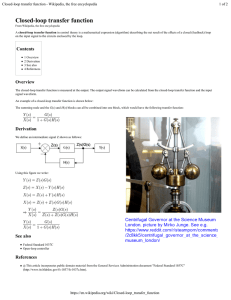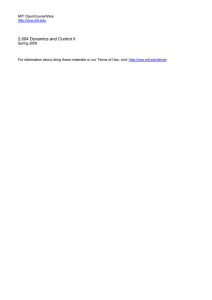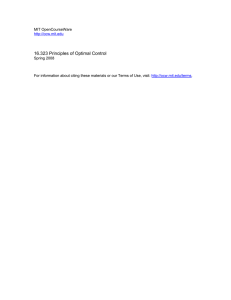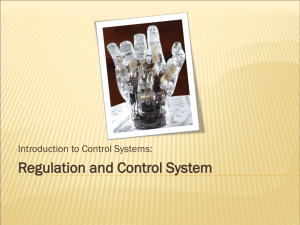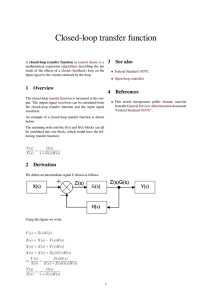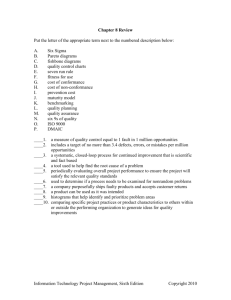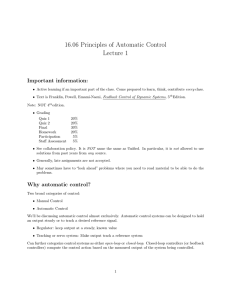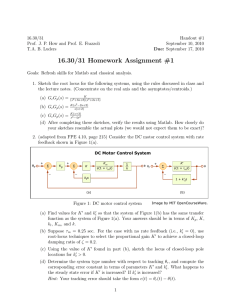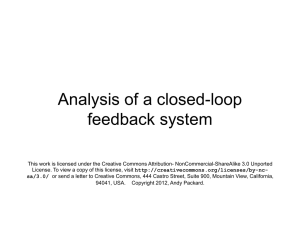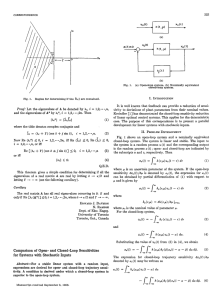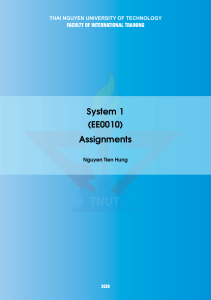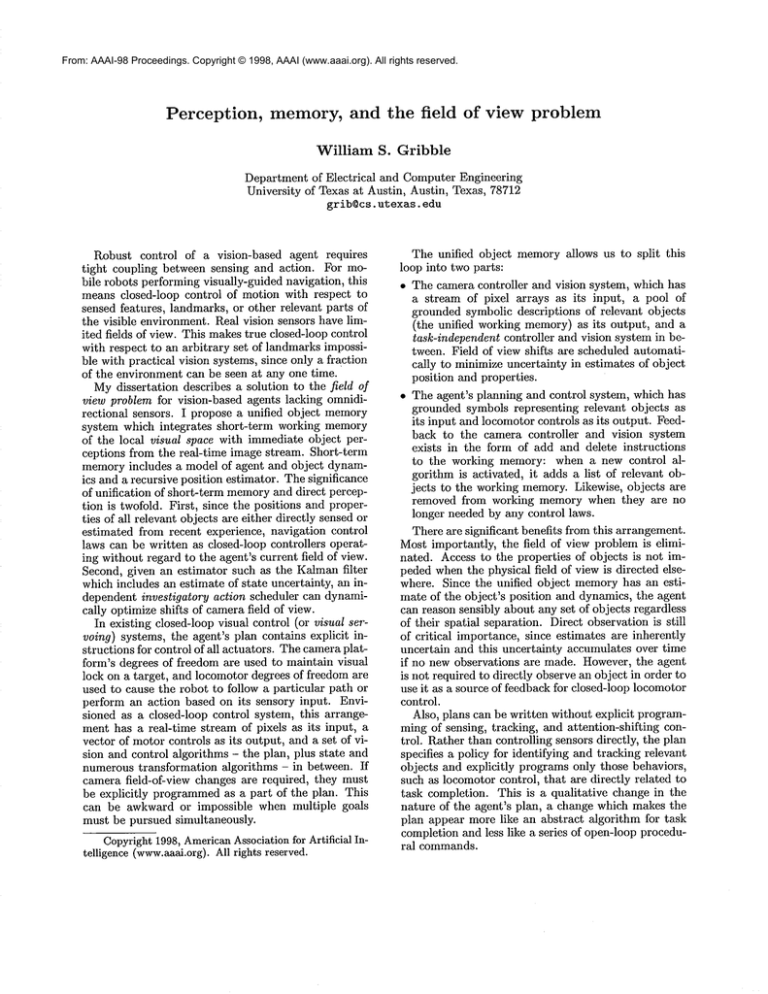
From: AAAI-98 Proceedings. Copyright © 1998, AAAI (www.aaai.org). All rights reserved.
Perception,
memory, and the field
William
of view problem
S. Gribble
Department of Electrical and ComputerEngineering
University of Texas at Austin, Austin, Texas, 78712
grib@cs,
utexas,
edu
Robust control of a vision-based agent requires
tight coupling between sensing and action. For mobile robots performing visually-guided navigation, this
means closed-loop control of motion with respect to
sensed features, landmarks, or other relevant parts of
the visible environment. Real vision sensors have limited fields of view. This makestrue closed-loop control
with respect to an arbitrary set of landmarks impossible with practical vision systems, since only a fraction
of the environment can be seen at any one time.
Mydissertation describes a solution to the field of
view problem for vision-based agents lacking omnidirectional sensors. I propose a unified object memory
system which integrates short-term working memory
of the local visual space with immediate object perceptions fl’om the real-time image stream. Short-term
memoryincludes a model of agent and object dynamics and a recursive position estimator. The significance
of unification of short-term memoryand direct perception is twofold. First, since the positions and properties of all relevant objects are either directly sensed or
estimated from recent experience, navigation control
laws can be written as closed-loop controllers operating without regard to the agent’s current field of view.
Second, given an estimator such as the Kalmanfilter
which includes an estimate of state uncertainty, an independent investigatory action scheduler can dynamically optimize shifts of camerafield of view.
In existing closed-loop visual control (or visual servoing) systems, the agent’s plan contains explicit instructions for control of all actuators. The cameraplatform’s degrees of freedom are used to maintain visual
lock on a target, and locomotor degrees of freedom are
used to cause the robot to follow a particular path or
perform an action based on its sensory input. Envisioned as a closed-loop control system, this arrangement has a real-time stream of pixels as its input, a
vector of motorcontrols as its output, and a set of vision and control algorithms - the plan, plus state and
numerous transformation algorithms - in between. If
camera field-of-view changes are required, they must
be explicitly programmedas a part of the plan. This
can be awkward or impossible when multiple goals
must be pursued simultaneously.
Copyright1998, AmericanAssociationfor Artificial Intelligence (www.aaai.org).
All rights reserved.
The unified object memoryallows us to split this
loop into two parts:
¯ The camera controller and vision system, which has
a stream of pixel arrays as its input, a pool of
grounded symbolic descriptions of relevant objects
(the unified working memory)as its output, and
task-independent controller and vision system in between. Field of view shifts are scheduled automatically to minimizeuncertainty in estimates of object
position and properties.
¯ The agent’s planning and control system, which has
grounded symbols representing relevant objects as
its input and locomotorcontrols as its output. Feedback to the camera controller and vision system
exists in the form of add and delete instructions
to the working memory: when a new control algorithm is activated, it adds a list of relevant objects to the working memory.Likewise, objects are
removed from working memory when they are no
longer needed by any control laws.
There are significant benefits from this arrangement.
Most importantly, the field of view problem is eliminated. Access to the properties of objects is not impeded whenthe physical field of view is directed elsewhere. Since the unified object memoryhas an estimate of the object’s position and dynamics, the agent
can reason sensibly about any set of objects regardless
of their spatial separation. Direct observation is still
of critical importance, since estimates are inherently
uncertain and this uncertainty accumulates over time
if no new observations are made. However, the agent
is not required to directly observe an object in order to
use it as a source of feedback for closed-loop locomotor
control.
Also, plans can be written without explicit programming of sensing, tracking, and attention-shifting control. Rather than controlling sensors directly, the plan
specifies a policy for identifying and tracking relevant
objects and explicitly programs only those behaviors,
such as locomotorcontrol, that are directly related to
task completion. This is a qualitative change in the
nature of the agent’s plan, a change which makes the
plan appear more like an abstract algorithm for task
completion and less like a series of open-loop procedural commands.

